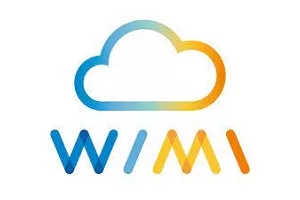WiMi Hologram Cloud Inc., a global hologram augmented reality technology provider, has announced development of a network slicing management system at the RAN (radio access network) side centred on artificial intelligence.
The system uses NFV (network function virtualisation) technology to instantiate multiple virtual networks (named slices) on the same physical network infrastructure. It allocates dedicated resources and customized functions to each slice at each layer to accommodate the highly heterogeneous nature and demanding requirements of modern mobile services. The system applies AI to all phases of the slice lifecycle, enabling privilege control of network access and dynamic resource allocation in the network core and wireless access.
WiMi’s system uses AI to solve the resource allocation problem for RAN slicing and deploys network slicing through NFV and SDN (software-defined networking) to provide diverse and personalised network services. The system can maximise the network’s resource allocation needs on the RAN side while reducing costs. The system can be widely used in various network scenarios, such as HD video, cell phone networks, IoT, and IoV.
WiMi’s AI-based RAN-side system manages network-slicing resources at different stages:
- Physical layer: Slicing, isolation, and dynamic adjustment of wireless resources, including spectrum resources, wireless port resources, RE (resource units) and PRB (physical resource blocks), etc.
- Data link layer: The protocol stack contains four modules, namely MAC/RLC/PDCA and SDAP, which mainly accomplish features such as slicing priority scheduling (execution level), channel resource slicing, proximity calculation, and QoS (quality of service) according to the different time requirements of service scenarios in the implementation of the slicing function.
- RRC module: It realises slice authentication, slice priority allocation, and policy management of slicing. RRC module can manage slicing resources at the physical and data link layers.
- Slice orchestrator: It is used for global slice provisioning, with a more range of slice resources under management.
RAN slicing contains three types of resources: air interface resources, protocol stack resources, and base station equipment resources. Each resource can be divided into different slices according to its resource characteristics for example, large bandwidth slicing, multi-access slicing, and low latency slicing. Or commercial-grade IoT, consumer-grade IoT, and Telematics are sliced.
The system designs the resource occupancy of slices, the strategy of scheduling, and the granularity of division according to the characteristics of slices and then provides them to the slice scheduler for allocation. The slices are also reallocated, merged, and extended according to the control information sent by the slicing orchestrator.
As the applications of 5G networks continue to expand and 5G empowers vertical industries, various network QoS requirements (e.g., bandwidth, latency, security, etc.) are also created. 5G network slicing drives network architecture toward software and service. By providing end-to-end logical private networks that enable specific network capabilities, network slicing technology migrates computing, storage, and service capabilities to the network edge, enabling proximity computing and distributed deployment of applications to meet the differentiated service needs of industry verticals.
WiMi’s system supports rapid deployment, collaborative work, and complete lifecycle management of slicing, with on-demand customisation capability of network slicing, automated deployment capability of slicing, end-to-end monitoring and collaboration capability of slicing, and intelligent operation and maintenance capacity of slicing.
Network slicing technology guarantees the end-to-end quality of service. In the future, network slicing technology will gradually involve scenarios including VR/AR, smart grid, smart manufacturing, smart park, UAVR, smart transportation, smart security, industrial automation, and a wide range of other industrial applications.
Comment on this article below or via Twitter: @VanillaPlus OR @jcvplus






